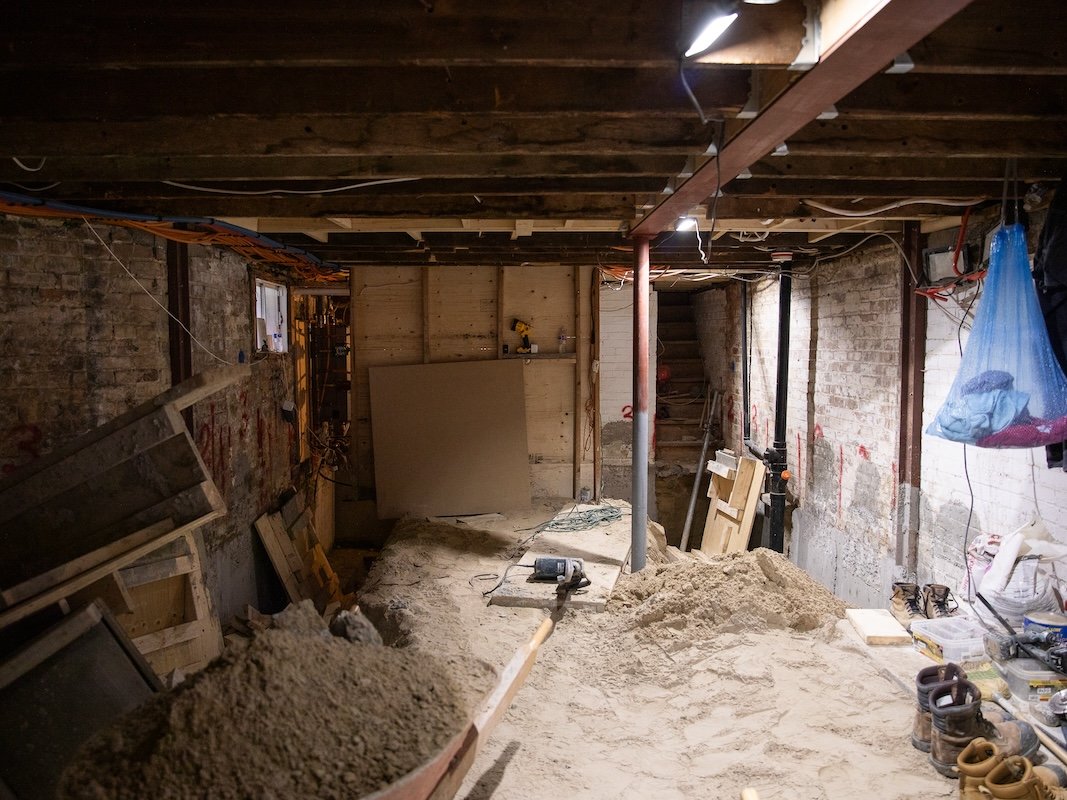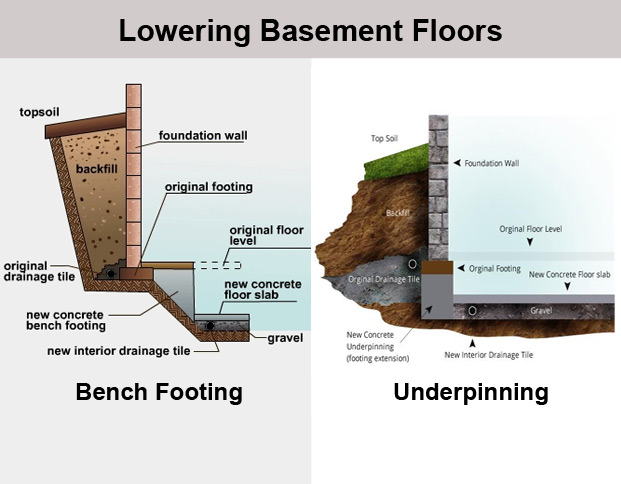Open the Possible: Walkout Basement Toronto Designs for Ultimate Living
Open the Possible: Walkout Basement Toronto Designs for Ultimate Living
Blog Article
Whatever You Need to Understand About Cellar Underpinning for a Stronger Home
Cellar base is an essential procedure that can dramatically improve the architectural stability of a home. Whether you are considering remodeling your basement or have noticed signs of structure issues, recognizing the ins and outs of support is important. From recognizing the signs that your home may profit from underpinning to the costs included and post-underpinning maintenance, this thorough overview will certainly clarify the complexities of this building method. Remain tuned to discover just how cellar support can not only reinforce your home but additionally offer assurance for several years ahead.
Benefits of Cellar Foundation
Cellar underpinning supplies significant structural support and enhanced security to homes, making certain long-term safety and security and toughness. One of the crucial benefits of cellar base is the capacity to enhance the structure of a residential or commercial property, specifically in instances where the existing structure is compromised or compromised. By extending the deepness or width of the structure, underpinning distributes the weight of the building better, lowering the risk of negotiation or structural failure in time.
Moreover, basement underpinning can create added living space or enable the building and construction of a cellar in residential or commercial properties that do not currently have one. This can substantially boost the value of the home and give even more practical area for the homeowners. Additionally, underpinning can help protect against water seepage and boost the general power performance of the home by sealing cracks and gaps in the foundation.
Indicators You Need Underpinning
Offered the architectural reinforcement and security benefits that basement support supplies, it is critical to be conscious of specific indications that might indicate the requirement for this foundational fortifying method. One usual indicator that your home may call for support is the visibility of cracks in the wall surfaces, particularly if they are angled or broader than a quarter of an inch. Additionally, doors or home windows that are sticking or no more closing appropriately could suggest a changing structure that requires foundation. Sloping or uneven floorings, particularly in older homes, might likewise suggest foundational concerns that foundation can deal with efficiently. If you notice spaces in between the wall surfaces and the ceiling or in between the wall surfaces and the floor, maybe an indicator of structure settlement, prompting the demand for underpinning. Finally, any type of noticeable indicators of moisture or water damages in the basement can be an indicator of a compromised structure that needs underpinning to prevent further structural damage. Routinely checking your home for these indicators can aid you recognize the demand for underpinning at an early stage, making certain the architectural integrity of your residential or commercial property.
Process of Underpinning

To initiate the process of foundation, a complete analysis of the existing structure's problem is performed by certified architectural designers. This analysis includes evaluating the structural integrity of the foundation, determining any kind of indicators of distress or weakness, and figuring out the proper base approach to strengthen the foundation. Once the evaluation is total and support is regarded necessary, the underpinning process normally begins with excavating sections of the existing foundation in a critical fashion. This excavation enables the installment of added assistance, such as concrete or steel beam of lights, beneath the foundation to boost its security and load-bearing ability.
After the support group remains in location, the following step includes gradually filling up the dug deep into sections with high-strength cement to secure the brand-new structure support ready. Throughout the underpinning process, cautious surveillance and adjustments are made to make certain that the foundation is successfully reinforced and that the structural honesty of the building is protected. By following a methodical approach and sticking to sector best techniques, underpinning can efficiently reinforce the structure of a home and mitigate architectural concerns.
Cost Considerations
Considering the monetary effects of underpinning a basement is crucial for property owners looking to enhance their residential or commercial property's foundation. The cost of foundation can vary substantially relying on various factors such as the size of the basement, the depth of the underpinning needed, the present problem of the structure, and the details support approach chosen. Generally, house owners can anticipate to pay anywhere from $1,000 to $3,000 per straight foot for underpinning services. This implies that for a normal 30-foot basement, the overall cost might range from $30,000 to $90,000 - toronto basement underpinning.
It's critical for house owners to acquire multiple quotes from trustworthy base specialists to ensure they are getting a reasonable rate for the job needed. Furthermore, it is essential to spending her explanation plan for any kind of unexpected conditions or extra costs that might occur throughout the underpinning process. While the expense of foundation may seem high, it is a needed financial investment to ensure the architectural honesty and safety of the home in the long run.
Upkeep After Underpinning
Following the conclusion of cellar support, regular upkeep is vital to protect the architectural improvements and guarantee long-term security of the home. As soon as support is done, property owners should faithfully monitor the basement for any kind of indications of fractures, water seepage, or changes in the structure. Regular evaluations by a qualified specialist can assist capture any kind of concerns early on, stopping prospective pricey repair work why not try these out in the future.
It is necessary to preserve appropriate drainage around the foundation to prevent water damage. Seamless gutters ought to be kept tidy, and downspouts ought to route water away from the residence. Any landscaping around the foundation must slope away from the home to avoid water merging near the basement wall surfaces.

Additionally, maintaining regular humidity levels within the basement is essential to protect against moisture-related issues. Correct air flow and making use of dehumidifiers can aid manage humidity levels and shield the recently strengthened foundation.
Conclusion
To conclude, basement foundation is a valuable process for enhancing the structure of a home. By identifying the indicators that suggest the requirement for underpinning and recognizing the process and prices entailed, house owners can ensure the stability and security of their residential property - basement underpinning services toronto. Proper maintenance after underpinning is necessary to lengthen the lifespan of the structure and avoid future concerns
One of the key benefits of cellar foundation is the capability to reinforce the structure of a residential property, especially in situations where the existing structure is damaged or compromised. When the analysis is full and underpinning is deemed necessary, the underpinning process typically begins with excavating sections of the existing structure in a strategic fashion. The cost of underpinning visit homepage can vary substantially depending on numerous variables such as the dimension of the basement, the depth of the underpinning required, the current condition of the foundation, and the specific underpinning method selected. When base is done, house owners must faithfully monitor the cellar for any kind of indications of fractures, water seepage, or shifts in the foundation.In verdict, cellar support is a useful process for reinforcing the structure of a home.
Report this page